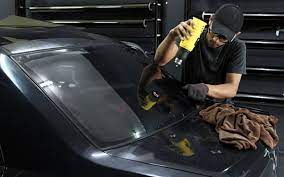In the realm of automotive customization, electric window tint stands out as a practical and stylish choice. Not only does it enhance the aesthetic appeal of a vehicle, but it also offers numerous functional benefits, ranging from UV protection to privacy. In this comprehensive guide, we’ll delve into the world of window tinting, exploring its benefits, types, installation process, and regulations.
Understanding Window Tinting:
Window tinting involves applying a thin film to the interior side of a vehicle’s windows. This film is composed of layers of polyester substrate, tinting agents, adhesive, and protective coatings. These components work together to provide various benefits, including:
- UV Protection: Window tinting blocks harmful ultraviolet (UV) rays from entering the vehicle, reducing the risk of skin damage and interior fading.
- Heat Rejection: Tinted windows can significantly reduce the amount of heat entering the vehicle, keeping the interior cooler and more comfortable, especially during hot summer months.
- Glare Reduction: Tinted windows minimize glare from sunlight and headlights, enhancing visibility and reducing eye strain for drivers and passengers.
- Privacy and Security: Tinted windows offer privacy by limiting the visibility into the vehicle’s interior, deterring theft and enhancing security.
Types of Window Tint:
Window tinting comes in various types, each offering different levels of tint darkness and performance characteristics. The most common types include:
- Dyed Film: Dyed window tinting features a layer of dye between the polyester layers. It provides a sleek appearance and excellent glare reduction but may not offer as much heat rejection as other types.
- Metalized Film: Metalized tinting incorporates metallic particles into the film, providing superior heat rejection and durability. However, it may interfere with electronic signals and can be more reflective than other options.
- Carbon Film: Carbon window tinting utilizes carbon particles to block heat and UV rays effectively. It offers a matte finish, minimal glare, and superior heat rejection without signal interference.
- Ceramic Film: Ceramic tinting is the premium option, utilizing ceramic nanoparticles to provide exceptional heat rejection, UV protection, and clarity. It offers superior performance without interfering with electronic signals.
Installation Process:
While some enthusiasts opt for DIY window tinting kits, professional installation is recommended for optimal results. The installation process typically involves the following steps:
- Preparation: The windows are thoroughly cleaned to ensure proper adhesion of the tint film.
- Cutting: The tint film is precisely cut to fit the dimensions of each window, accounting for any curves or angles.
- Application: The tint film is carefully applied to the interior side of the window using a solution to prevent air bubbles and ensure a smooth finish.
- Trimming: Excess film is trimmed away, and the edges are sealed for a seamless appearance.
Regulations and Legal Considerations:
It’s essential to familiarize yourself with local regulations and legal requirements regarding window tinting. These regulations often dictate the allowable tint darkness levels for different windows, such as the front windshield, side windows, and rear window. Violating these regulations can result in fines and may require tint removal to comply with the law.
Conclusion:
Window tinting offers a myriad of benefits, from enhancing comfort and style to providing protection and privacy. By understanding the types of tint available, the installation process, and legal considerations, vehicle owners can make informed decisions to achieve their desired results. Whether seeking relief from the sun’s glare or adding a touch of elegance to their ride, window tinting remains a versatile and practical choice for automotive enthusiasts.



